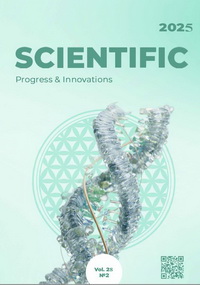Clinical, hematological, and imaging markers of immune-inflammatory response in Feline Coronavirus Infection
DOI:
https://doi.org/10.31210/spi2025.28.02.30Keywords:
Feline Coronavirus, Feline Infectious Peritonitis, immunoinflammatory response, haematological markers, clinical indications, imaging diagnostics, immunityAbstract
Feline Infectious Peritonitis (FIP) is a severe and often fatal viral disease caused by mutant strains of feline coronavirus. FIP remains one of the most challenging infections in veterinary medicine. Therefore, the investigation of clinical, imaging, and hematological markers of the immune-inflammatory response in FIP is a relevant direction in contemporary veterinary research. The study was conducted during 2023–2025 on 33 domestic cats, which were divided into three groups: Group 1 included 10 clinically healthy cats; Group 2 comprised 14 cats with a confirmed diagnosis of the effusive (wet) form of FIP; Group 3 consisted of 9 cats with the non-effusive (dry) form of the disease. The diagnosis was established based on clinical findings, hematological and imaging examinations, and immunological data. Key clinical markers of the dry form included emaciation, generalized lymphadenopathy, neurological signs, or ophthalmic involvement. In contrast, ascites was most commonly observed in the wet form. Thoracic radiographs of affected cats revealed pneumonia with focal or diffuse pulmonary changes, interstitial infiltrates, and, in some cases, pleural effusion. Abdominal structural alterations indicated the presence of exudative ascites. Ultrasonography revealed hepatic parenchymal hypoechogenicity and hyperechoic fibrinous strands in the abdominal fluid. These imaging findings support the presence of cytokine dysregulation and viral macrophage tropism, indicating the involvement of the immune system in FIP pathogenesis. Hematological analyses showed a statistically significant (p<0,01; p<0,001) reduction in erythrocyte count, hemoglobin concentration, and hematocrit levels in affected cats, regardless of the disease form. In cats with the wet form of FIP, leukogram changes reflected a hyperactive inflammatory response: a significant (p<0,001) increase in the relative numbers of monocytes and segmented neutrophils, alongside a significant (p<0,001) decrease in lymphocyte percentages. The dry form was characterized by band neutrophilia (65,67±2,00), indicative of chronic inflammation. Both forms demonstrated statistically significant (p<0,05 … p<0,001) elevations in several biochemical parameters, including glucose, urea, cholesterol, total and direct bilirubin, total protein, as well as the activities of alanine aminotransferase, aspartate aminotransferase, amylase, and gamma-glutamyltransferase. Identified changes in hematological, biochemical, and imaging parameters may serve as supplementary diagnostic markers in the comprehensive diagnosis of feline infectious peritonitis.
Downloads
Published
How to Cite
Issue
Section
License
Copyright (c) 2025 Scientific Progress & Innovations

This work is licensed under a Creative Commons Attribution 4.0 International License.

 Creative Commons Attribution 4.0 International Licens
Creative Commons Attribution 4.0 International Licens